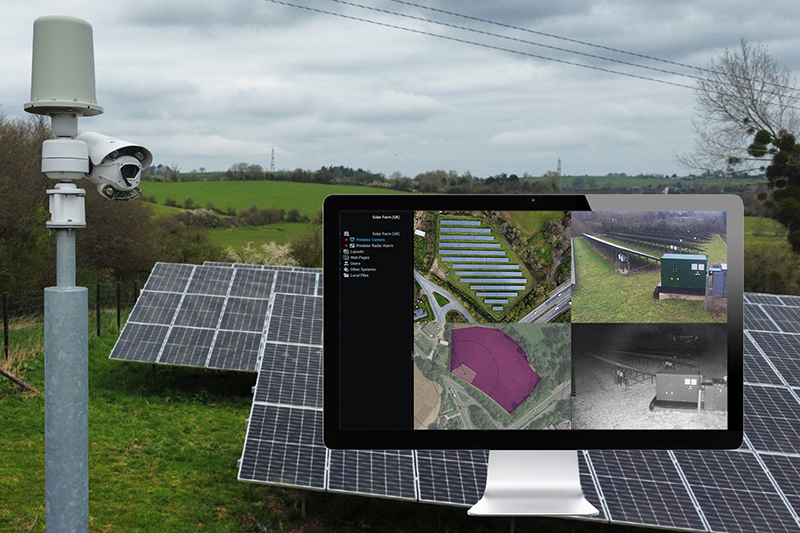 360 Vision Technology has been selected to supply its radar surveillance camera technology to a solar farm site in Ross-on-Wye, Herefordshire.
360 Vision Technology has been selected to supply its radar surveillance camera technology to a solar farm site in Ross-on-Wye, Herefordshire.
Capable of generating 1-Megawatt of electrical power, the solar farm site was constructed by Vartec EPC for Lowther Renewables, to help offset the carbon footprint of its parent company, AJ Lowther & Son, which provides a range of steelwork, cladding and refurbishment services.
In collaboration with Vartec, a technical specification for the solar farm was jointly devised by Craig Carton, 360 Vision Technology’s technical & customer support manager, resulting in the specification of a 360 Vision Predator Radar camera unit to secure the entire site.
The 360 Vision Predator Radar camera unit deployed integrates radar technology with a Predator 1080p HD camera, to offer a perimeter and wide area surveillance solution with up to 200m radius/400m diameter constant surveillance capability.
“The site’s remote countryside location, coupled with its significant slope and numerous access points along its perimeter, presented many challenges,” says Craig Vardy, managing director of Vartec. “Lowther Renewables required coverage of the entire solar farm and it would normally have required several traditional security cameras to provide adequate surveillance coverage which would have been prohibitively expensive. However, we were able to negate the need to install several surveillance cameras by specifying one 360 Vision Predator Radar camera unit to cover the same area.”
At the site, on detection of an object by the camera, an alarm activation is sent to the NX Witness VMS via an I/O module. NX Witness sends this alarm onwards to the Sentinel alarm management platform at the Doncaster Security Operations Centre (DSOC), where alarms are prioritised and evidence for the events is retrieved. This provides the operators with live and recorded video and audio, allowing them to make a decision as to the cause of the alarm. Operators are guided though pre-defined manual and automated actions, based on the cause, to ensure a rapid response to the situation. The whole alarm handling process is fully audited allowing further analysis and reporting post alarm handling.

